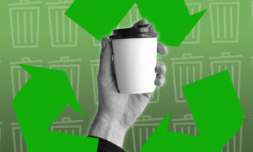Spanish humanitarian firm Genaq is bringing clean drinking water to refugees and natural disaster survivors by extracting atmospheric humidity from the air. Spanning 45 countries, its ingenious generators currently provide up 1.5 million litres a day.
With constant media emphasis on last month’s alarming IPCC reports and the general obsession of how humanity continues to screw the planet, it makes a nice change of pace to honour a company actively making the world better.
It’s something easily taken for granted in wealthy nations, but bringing clean drinking water to the entire planet is yet another crisis we must face in the coming years.
Combined factors of climate change, global conflict, and overpopulation have left 1.1bn without access to safe drinking water, meanwhile 2.7bn continue to experience water scarcity and risk contracting deadly diseases every day.
As the global population continues to grow, that leaves as much as 35% of the planet still struggling to come by this basic human need.
Humanitarian organisations continue to ferry resources around the planet, but the possibility of building on-site water infrastructure in remote regions often relies on circumstantial factors. As such, we need decentralised solutions to come to the forefront.
Now, for the good news.
Genaq’s atmospheric water generator
In the air we breathe, there is certain degree of humidity which is actually water vapour. While this probably isn’t breaking news to you, only recently have we turned that detail to our advantage.
Back in 2008, Spanish innovators Genaq started research and development to test the feasibility of using refrigeration tech, the ultimate goal being to turn water vapour back to its liquid state in large quantities.
Over a decade later, the company has developed four iterations of such water generators and the latest is reportedly capable of producing anywhere from 50 to 5,000 litres of water per day – depending on the surrounding level of humidity, and the requirement at hand.
The smallest of the devices, the ‘Stratus’, works in the same way an air purifier does.
Roughly the same size as a high school locker, it sucks in air around the clock and is currently in use throughout Malaysia, Qatar, Ethiopia, Nigeria, Chile, Algeria, Panama, and Pakistan, among others.
Once the water vapour in the air is cooled back to its original state, ultraviolet light is used to kill any lingering pathogens that may be present and the solution is autonomously reminalised.
The result is purified water with a similar mineral quality to what you’d find in bottled supermarket water – but without any pesky single-use plastic changing hands.
Beyond the ‘Stratus’, the medium sized version called ‘Nimbus’ targets the industrial sector within remote locations. We’re talking oil rigs, mining camps, construction sites, etc.
Slightly larger, the ‘Culmulus’ is typically transported by helicopter and is designed for emergency responses to natural disasters. Finally, the XXL – called AWGPlant – is intended to completely overhaul existing bottling plants, residential water supplies, and industrial processes.
First and foremost, these designs aim to provide clean sanitation, minimise the risk of diseases like Cholera and Dysentery, and improve access to both food and drinking water globally.
However, it turns out Genaq is also keen on decarbonising some of the biggest climate offending industries with its devices. Two birds, one stone.





















